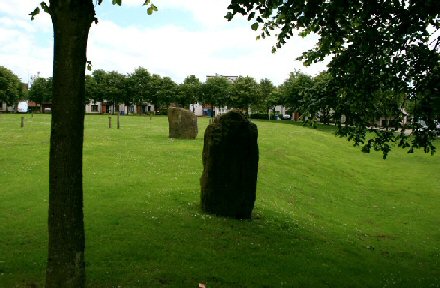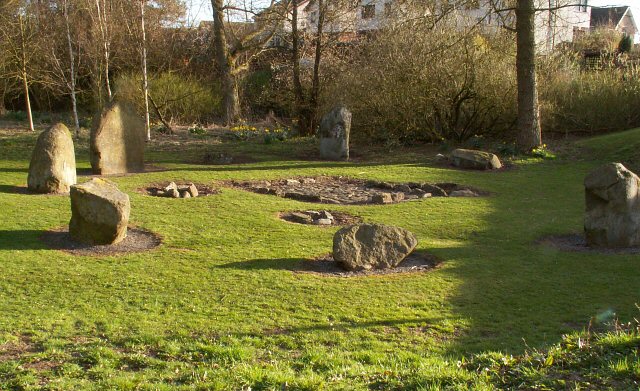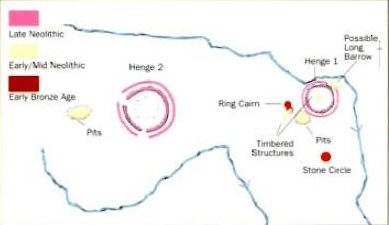The Use of Henbane as a Hallucinogen at Balfarg:
The specialist report included in the excavation publication identified high pollen values and seed numbers of henbane (Moffat 1993). Organic residues adhering to pottery sherds, which had been broken and often scorched at the time of deposition, were examined by Moffat. The context of these sherds, associated with what has been identified as a ritual monument, and the manner of deposition, has been interpreted as ritual activity. The presence of henbane in significant concentrations has been interpreted as the use of a hallucinogenic drug, as part of these ritual activities. To date, excavations at other `ritual' sites have not been able to produce comparable evidence for the use of poisonous or hallucinogenic plants at these sites (Long 1998) and Balfarg is unique in this respect. However, this evidence has been used to support theories of the use of hallucinogenic drugs in the Scottish Neolithic and parallels have been drawn to the use of other members of the Solanaceae in South America and Australia (Sherratt 1996).
An approximate chronology from the Balfarg/ Balbirnie complex (Barclay & Russell-White 1993) suggests that ceremonial activity lasted from the 4th to the 2nd millennium BC (uncalibrated). Organic residues adhering to three types of pottery were examined. These three groups are defined by Cowie (1993) as Early Neolithic Cowie Group 1 and 2 and Grooved Ware vessels. Radiocarbon dating of associated charcoal indicates an age range spanning some 1000 years, between 3710 and 2610 years cal BC (Barclay & Russell-White 1993: 160-61). Sherds of different vessels were deposited in separate locations and sometimes sherds from a single pot were deposited in different locations (Barclay & Russell-White 1993: 187). This and the low numbers of sherds means that context is difficult to interpret although Richards and Barclay (in Barclay & Russell-White 1993: 187-92) suggest that deposition may have had ritual significance as all pottery appears to have been used, broken and often burnt prior to deposition on site. There is no evidence that sherds were removed from the site. Richards (1993) interprets this as evidence that the sherds were `ritually charged'.
Botanical evidence from the residues consisted of a pollen assemblage identified on one sherd (Pot 63) that included significant proportions of henbane (Hyoscyamus niger), meadowsweet (Filipendula ulmaria), goosefoot (Chenopodiaceae) and cabbage/mustards (Brassicaceae). A `small cache' of henbane seeds was also identified in the residue of this same sherd (Moffat 1993). No comparable evidence was found in residues from other sherds examined by Moffat. There is no indication published of the number of pollen grains or seeds involved. Assessment of pollen preservation can be used to indicate the reliability of a pollen assemblage by highlighting those assemblages with high proportions of poorly preserved pollen, which can suggest differential preservation of the assemblage. However, published information from the 1997 study does not allow this assessment of reliability. This makes re-interpretation and further use of these data difficult to the extent that re-analysis is the only way to assess their reliability.
Henbane has profound and intoxicating properties (Cooper & Johnson 1984): the plant is poisonous and ingestion causes euphoria, hallucinations, blurred vision, dizziness, rapid heartbeat and eventually death when consumed in excess. Grieve (1931) suggests that the leaves, flowering tops and seeds are most frequently used in medical preparations and adds that boiling does not destroy the toxic properties of the plant. Seeds, however, have 10 times the strength of the leaves and Grieve (1931) specifies that although a dose of 20 seeds has not proved fatal to adults, reactions to this dose would include vomiting, loss of consciousness and sometimes suffocation. (2)


